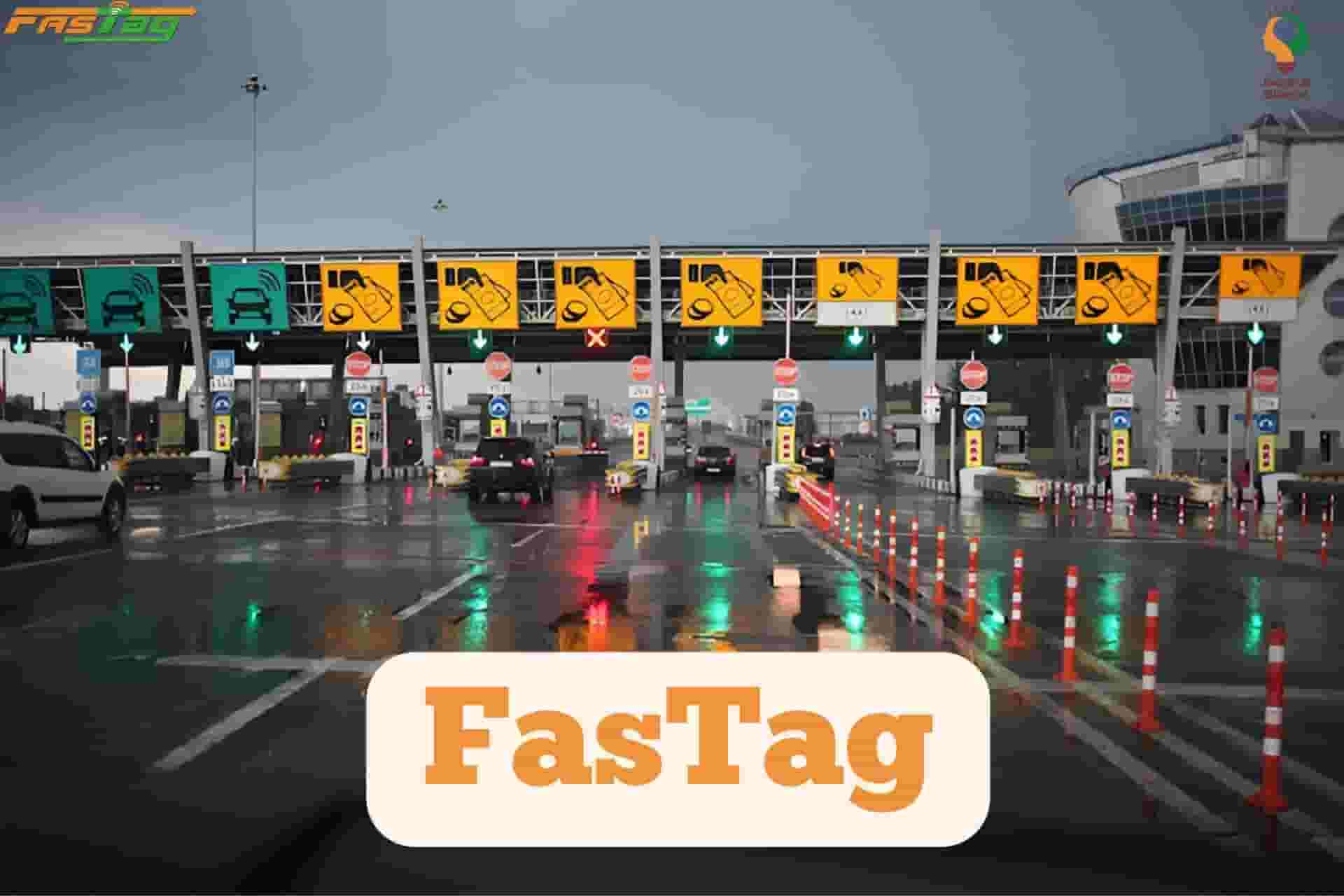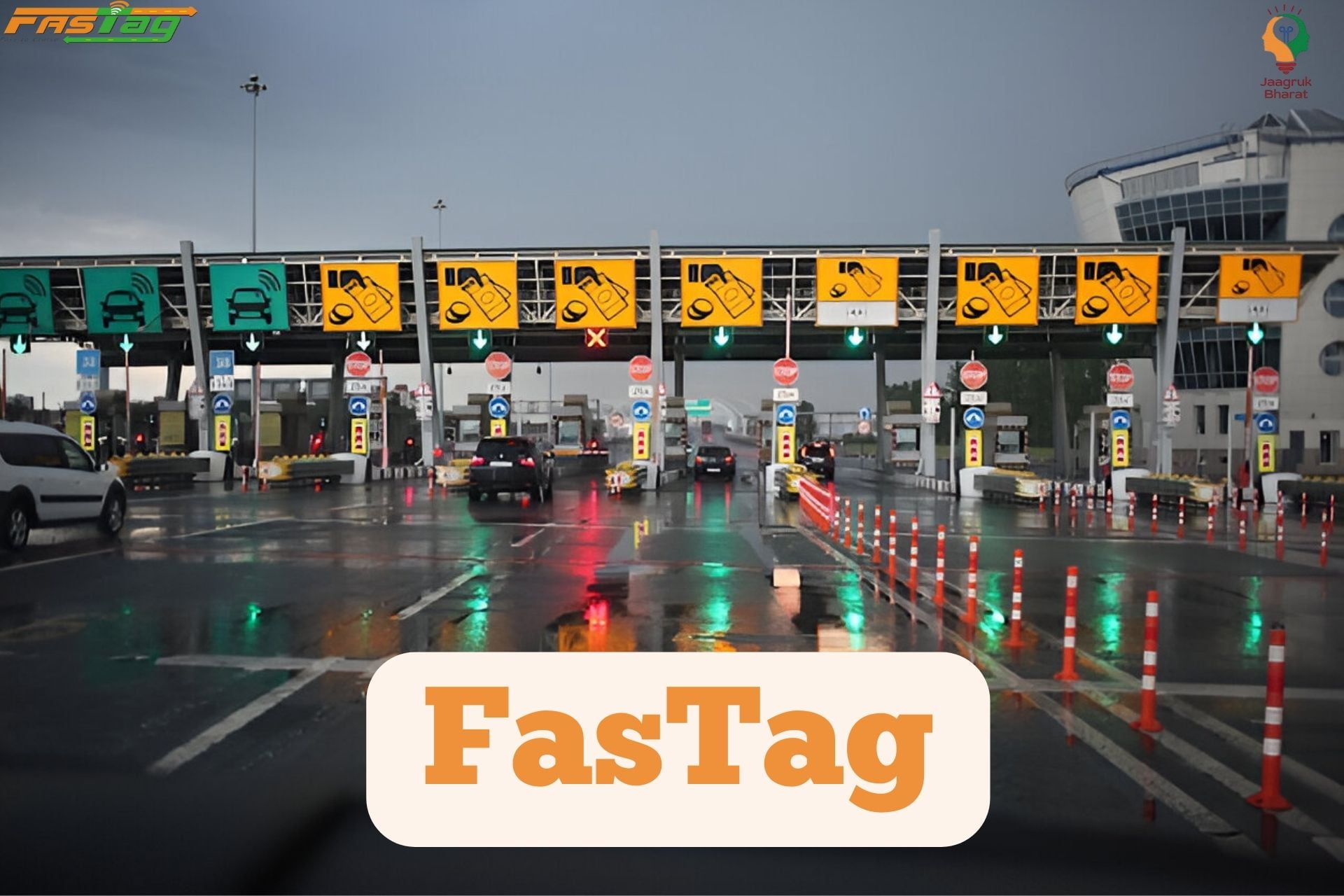FASTag Change 2025 - New Rules, Benefits And How To Apply
Updated: 05-11-2025 at 5:30 AM
2k


FASTag is an efficient Radio Frequency Identification (RFID) based toll suspension payment system that operates in India to enable quicker payments. This uses an RFID system to help customers avoid charges every time they pass through toll plazas linked to their account number, hence easing movement without delays. It is fixed on the car's windscreen and linked to its registration; that way, you make payments smoothly when passing through toll stations.
Read the article to learn in-depth about the FASTags, ranging from their features to answers to questions like, ‘How to change FASTag mobile number?’, ‘How to change FASTag bank?’, and ‘How to change FASTtag account?’ through the FASTag change online process.
Overview
Below is a table that summarises the significant points about the FASTag that one should know.
| Name of the tag | FASTag |
|---|---|
| Issued by | National Highways Authority of India (NHAI) |
| Updated technology used | Satellite-based toll system |
| Validity | 5 years |
| Ways of recharging | Online through debit/credit cards or UPI |
| How to change FASTag mobile number? | FASTag mobile number change through the online portal of your bank |
| How to change FASTag bank? | Change FASTag bank by visiting the bank's website |
| How to change FASTtag account? | Through various ways, like FASTag change by vehicle number, through changing banks, or the NHAI portal |
Read more: Ayushman Card
Latest News
FASTag operations have recently been changed to make the system more efficient and fair for the people of India. The government of India is introducing a satellite-based toll system, which will benefit the people driving on National Highways in various ways, such as:
-
People will be charged for the exact distance they travel.
-
No more waiting in long toll queues.
-
Reduces the chances of manual errors.
What Is FASTag?
FASTag is an electronic toll collection system initiated by the National Highways Authority of India and used widely across the country. A toll is a nominal fee that people are mandated to pay when using a bridge, road, or waterway, and the fee is then used for maintenance purposes.
FASTag Key Features
FASTag is a prepaid electronic toll payment tag using RFID technology, which is valid for five years and easily rechargeable online. Below are the salient features of the FASTag:-
-
Joining Fee: The joining fee for FASTag is just INR 100, including GST.
-
Security Deposit: Depending on the type of vehicle, the security deposit starts from INR 200 to 500.
-
Validity: FASTag is valid for five years, and its expiration can be renewed.
-
Recharge Anytime: Fortunately, you can recharge your FASTag through Net Banking, Credit, or Debit Cards online.
-
Wide Availability: With over 360 FASTag centres at National and State toll plazas and an expanding list of locations.
What Are The Rules For Using FASTag?
FASTag should be placed on the vehicle's front windshield for scanning and linked to a valid prepaid account. There are three notable rules for FASTag:
-
If the toll plaza scanner is malfunctioning, but the tag has funds, no extra payment is mandated, and the vehicle can pass freely.
-
Even with a damaged tag holding a balance internally, toll amounts can still be deducted using the vehicle number plate information.
-
In emergencies, dialling the number 1033 connects to officials who can provide roadside assistance.
Read more: Death Certificate
What Are The Benefits Of FASTag?
FASTag enables cashless toll payments, saving time by avoiding manual transactions at toll plazas. The following points showcase the key benefits of the FASTag:
-
FASTag provides a hassle-free experience for drivers when travelling longer distances with multiple toll plazas. For example, a trip from Delhi to Mumbai involves around 20 toll gates where cash payments are ordinarily required at each stop.
-
With FASTag, the vehicle can pass through non-stop as the tags deduct fees automatically. This saves time otherwise spent waiting in long queues. It also helps conserve fuel and lessen traffic congestion on roads.
-
Additionally, FASTag users receive SMS or email alerts regarding transactions on their registered mobile numbers. This keeps them informed of payments deducted during journeys.
Read more: eShram Card
What Are The FASTag Documents Needed?
There is a slight difference in the requirements of necessary documents, both for individuals and corporations. Hence Required Documents for FASTag are as follows:
For Individuals:
-
RC, or the certificate of registration of the motor vehicle.
-
You can only provide the PAN, Aadhaar, Passport, Voter's ID, or Driving license for identity proof.
-
Passport-sized Photograph
For Corporations:
-
The certificate of registration of the motor vehicle is also known as the registration document or simply the RC.
-
Passport-size photograph and photocopy of any of the following government-issued photo identification: Passport, Driving Licence, Voter ID Card, Farmer’s ID Card, Aadhaar card/UID card.
-
An authenticated photograph identity card of the authorised signatory
-
Company PAN Card.
-
A board resolution or authorisation letter (where required).
-
Any option certificate within three years from the date of passing of the last option can be levied under the GST Act.
How To Apply For A FASTag Online?
Apply for FASTag at a bank branch or online by filling out an application form and submitting the required KYC documents. Follow the steps below to apply for the FASTag.
Step 1: To obtain a FASTag, one should visit the official NPCI website. There, applicants must first select their issuing bank from the given options.
Step 2: Afterwards, a link will direct the user to that bank's webpage to enter important application details. This includes personal information, vehicle details, and payment for issuance charges.
Step 3: Once submitted and confirmed, the activated FASTag is delivered via mail to the registered address within a few business days.
How To Check If Your FASTag KYC Is Complete Or Not?
In cases where your KYC is incomplete, your bank will inform you through email, mobile or its application. To update your KYC details online:
Step 1: Visit the NETC website.
Step 2: Select the issuing bank for the FASTag facility.
Step 3: This will lead you to the FASTag section of your account with the bank where you hold the account. However, you can always go to the website of your issuer to do the KYC there online.
What Are The Different Ways To Recharge Your FASTag?
There are multiple ways to recharge FASTag. Some of the ways are laid down below in brief points for one’s reference:
-
You have the option to recharge through Debit/Credit Card, Net Banking, NEFT, or RTGS.
-
The main method of recharging is through the website of the issuing bank (for example, if you’ve a bank account with the Bank of Baroda, you can recharge your FASTag through the bank’s website.)
-
For recharge purposes and tracking, one has to opt for the IHMCL app, SBI YONO or other apps available.
How To Change Your FASTag?
If your FASTag is lost, damaged, or you no longer own the vehicle, follow these steps to replace it:
Deactivate Old FASTag:
Log on to the website of your FASTag issuer or call customer support to disable your old FASTag if your car is no longer with you or if the FASTag is lost or damaged. This will avoid the wrong quantification of expenses that have already been taken as deductions.
Note: Failure to replace a deactivated FASTag will result in the customer being charged double at the toll plaza.
Purchase a New FASTag For FASTag Number Change:
Step 1: Select a FASTag issuer (It could be any bank/NPCI).
Step 2: On the list of links, click on the one that leads to the website of the particular issuer of interest, then click on the option labelled “Buy FASTag”.
Step 3: Complete the necessary vehicle information on the form and choose a recharge value.
Step 4: You are required to make a full payment for the services through the favoured payment mode to complete the FASTag number change process.
Step 5: Once you have made the payment, you will receive an email or an SMS, which will confirm your order, and you will receive your new FASTag within 3-5 working days.
Please note that you can do FASTag change by vehicle number as well and the answer to the question, ‘How to change phone number in FASTag?’ also lies in the online portal.
How To Block Your FASTag If Your Vehicle Is Lost?
In case of vehicle theft, contact the FASTag issuer’s customer service to block your FASTag account. If your FASTag is lost or your vehicle is stolen:
Block FASTag: Contact Customer Support via:
-
Customer care helpline.
-
Email to the issuer’s service team.
-
Through visiting the website of the FASTag issuer company or at a point of sale location.
Transaction Prevention:
- If it is blocked, no more deductions will be made; however, your FASTag balance will be safe.
Conclusion
Keeping these rules in mind helps commuters travel smoothly with FASTag. Educating others about them also fosters awareness for safer journeys nationally.
As India enhances its highway infrastructure, toll booths and FASTag will continue playing vital roles in maintaining quality transportation networks sustainably across the country for years to come.
Stay updated with Jaagruk Bharat to get the latest information on government schemes and more, and reach out to us via our community page if you have any questions or want to share your thoughts.
0
0
2k
0
0
2k Views
0
No comments available





Our Company
Home
About
T&C
Privacy Policy
Eula
Disclaimer Policy
Code of Ethics
Contact Us
Cancellation & Refund Policy
Categories
Women
Insurance
Finance
Tax
Travel
Transport & Infrastructure
Food
Entertainment
Communication
Government ID Cards
E-commerce
Traffic guidelines
Miscellaneous
Housing and Sanitation
Sports
Startup
Environment and Safety
Education
Agriculture
Social cause
Employment
Disclaimer: Jaagruk Bharat is a private organization offering support for documentation and government scheme access. We are not affiliated with any government body. Official services are available on respective government portals. Our goal is to make processes easier and more accessible for citizens.
All Copyrights are reserved by Jaagruk Bharat